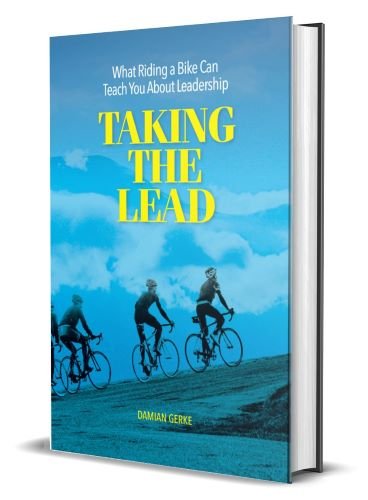It’s All About the Heart
One of the things I enjoy about cycling is the satisfaction I get from increasing my speed over previous rides. But only using speed to evaluate performance can be misleading. One recent ride (re)taught me an important lesson.
I was making great progress on the outbound leg. My average speed was up four mph and my legs felt strong. But on the way back my exhilaration turned to discouragement as the ride got much harder. I struggled with every pedal stroke to keep my speed up. I immediately chalked it up to starting out too fast and using up my energy. An obvious conclusion, right?
Wrong. I’d failed to realize that the winds had changed. What was calm winds at the start of the ride turned into a stiff headwind by the time I turned and started for home. Now failing to keep pace, I quickly became demoralized and disappointed in my performance.
And Your Point Is…?
Leadership headwinds make almost everything harder.
“Only using speed to evaluate performance can be misleading.”
So What?
A couple of points to draw here. First, there’s no getting around it: Headwinds suck. Leadership will have both easy and challenging experiences. You can’t just hope for tailwinds all the time. We must deal with headwinds when (not if) they occur.
Second, it’s important to know where to focus in a headwind. Monitoring speed kept telling me I was failing. But my heart was actually getting a great workout. In cycling, a strong heart is the ultimate goal: Only an aerobically-fit heart will position me to ride further and faster. While it’s relatively easy to strengthen legs, hearts only get stronger when tested over longer periods of time and through increasingly difficult challenges.
“You can’t just hope for tailwinds all the time.”
We all have a natural bias for (and often against) one discipline over the other. Our default behaviors eventually become predictable and stale. Then when the pressure’s on we double-down on our default discipline. We over-rely on its strengths and its weaknesses show up as glaring gaps in our leadership competency.
Our team feels either the chaos that comes from over-leading or the irrelevance that comes from over-managing. They get demotivated and disengage, eventually losing trust in us. Consciously or unconsciously, they choose not to follow us.
Over-relying on your leadership or management makes you a one-trick pony. You can’t be effective, no matter how capable, intelligent, extroverted, correct or successful you are.
“Without leadership, organizations don’t drive results and they become unresponsive to customers and marketplace opportunities.”
The Big Picture
It’s helpful to remember that headwinds are exercising different parts of your leadership, beyond productivity. Headwinds deepen things like resiliency, creativity, collaboration, communication, attitude, endurance, prioritization, resolve, commitment, drive … all of which are key leadership qualities that rarely—if ever—get developed in a tailwind.
Your Next Step
Lead yourself. If you can’t encourage yourself, manage your own expectations, cut yourself a break, engage your creativity, adapt your approach, keep yourself in a positive mindset, … how will you be able to lead your team when they encounter headwinds? You’ll need to be able to do more than tell them to pedal harder.
“You’ll need to be able to do more than tell them to pedal harder.”
Don’t be discouraged in a headwind—and it’s training you.


